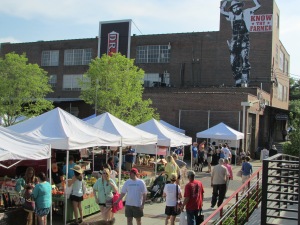It’s Thanksgiving afternoon and I am sitting at my parents’ house. It’s quiet for the moment on a beautiful warm-ish sunny day and my mother is resting after coming home from the hospital yesterday.
Mother did not feel up to having the Thanksgiving meal at the home of my brother and his family today as planned so we quickly came up with an alternative. I cooked what Mother and I planned to bring from her house and my brother will bring food from their house and pick up our part of the meal.
Mother had planned to cook her cornbread dressing so I used her recipe to make that happen. I was asked to make “kushmagudi,” my grandmother’s coinage for her savory mixture of crumbled cornbread and the potlikker from a pot full of turnip greens. I also am contributing an ambrosia, a fruit salad that is always as individual as the person who prepares it.
My own ambrosia is in a state of constant flux, based on memories of my Grandmother Journey’s version, adaptations of chef Scott Peacock’s elegant recipe, and various others I have tasted. My own version today includes satsumas, pineapple chunks, shredded coconut, pecan pieces, and – in lieu of the miniature marshmallows so often used in a Southern ambrosia – I mixed in a bit of fluffy marshmallow crème. One final touch is a few cherry halves sprinkled in for color as much as anything. The cherries are not necessary but I seem to recall them from ambrosias past.
Every Thanksgiving, no matter the individual circumstances that particular year, reminds me of my Grandmother Harbison. She would start cooking early and load a table with all kinds of food for the special day. Somewhere, at my parents’ house, there is a photo I took of Grandmother’s table just because I could not believe the bounty.
The memory is abundant. The lacy tablecloth would be on the dining room table and there would be potatoes – sweet and Irish, beans, peas, turnip greens (our family was always partial to turnip greens over collards), a big bowl of kushmagudi, casseroles, cranberry sauce, breads, and cornbread dressing (my Grandmother Journey would make oyster dressing if we were at their house).
At Grandmother Harbison’s table, there was always a turkey and a ham; chicken and roast beef were often on-hand. She cooked beautiful cakes and pies and there’d usually be a break between the meal and the dessert. Her dining room table wasn’t a huge one, but somehow, she’d manage to get everything on the table, including our place settings.
Grandmother Harbison fed people her entire life. Her philosophy was to have plenty of choices so that everybody would find something they liked.
I was a skinny kid in those days but, on the holidays at Grandmother Harbison’s table, I liked it all.
My most vivid memory of these meals, however, is what Grandmother would do while the rest of us were eating. She’d pull her own chair away from the table and sit in the corner or by the door to the kitchen. She’d take a small plate – sometimes a small bowl – and serve herself a small portion of everything on the table, tasting it carefully as she watched us eat and listened for our reactions. When she’d be asked why she didn’t pull her chair up to the table, she would respond “I’m fine here” and keep tasting, enjoying the reactions of her family to the products of her labors.
As the years pass, I think of such moments. I try to remember the exact year and circumstances of the very last Thanksgiving meal we shared at Grandmother Harbison’s table. But the details escape me. As it was happening, I’m sure we didn’t realize it was for the last time; we were savoring the meal, but we didn’t know we needed to fully and mindfully savor the moment.











